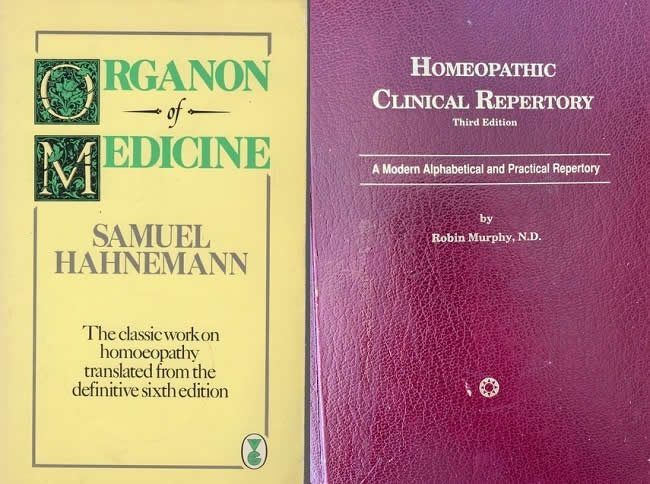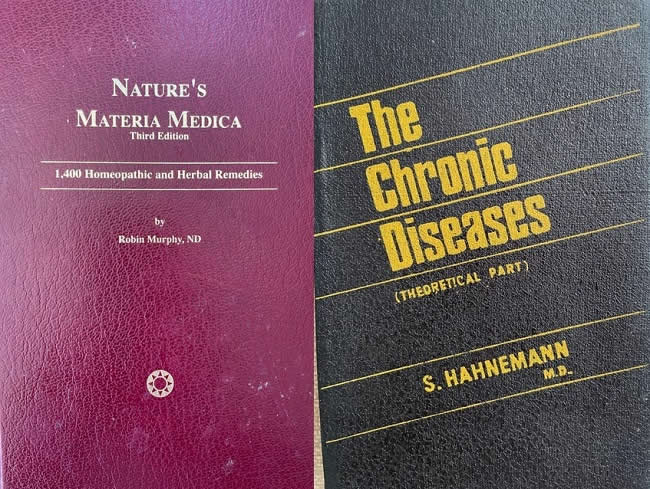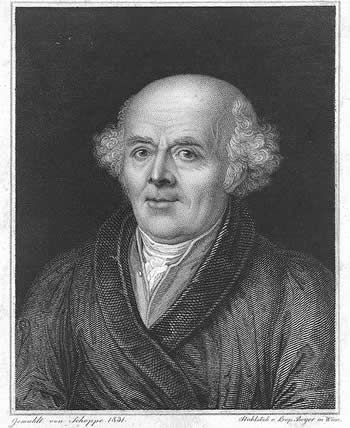Positive Health Online
Your Country

Homeopathy – Celebrating the Life of Samuel Hahnemann
listed in homeopathy, originally published in issue 279 - June 2022
Homeopathy Awareness Week takes place in April each year. It is a time when homeopaths celebrate the birth of its founder Samuel Hahnemann as well as acknowledging the challenges he faced during his lifetime and being immensely grateful that he introduced the world to the healing powers of homeopathy.
Line Engraving S. Hahnemann 19th Century
Hahnemann was born in Meissen, Saxony (East Germany) on 10 April 1755 and was blessed with a brilliant mind. With the intention of studying medicine after leaving high school, he joined the University of Leipzig. At that time certain medical procedures were somewhat barbaric. Instructions in medical books were to “bleed the patient until he faints”, whether the patient had a respiratory infection or was a pregnant woman. Hahnemann feeling that more people died of their treatment rather than the actual disease became disillusioned, left the University and took up the study of languages. His interest in medicine undiminished, he returned to the University of Erlangen, Bavaria where he completed his medical studies and in 1779 was awarded his doctorate of medicine.
His wife Johanna bore him thirteen children and with his ever-growing family he supplemented his income by utilizing his translating skills. It was whilst working on a book by the Scottish physician Dr William Cullen that he came across information on the drug Cinchona (Peruvian Bark) that was used in the treatment of malaria. He decided to undertake his own experiment on the drug and took large doses of Cinchona for several days, meticulously noting the effects it had upon his body. Drowsiness, heart palpitations, quickened pulse, thirst, redness of his cheeks, coldness of his feet and fingertips and trembling in his limbs were the symptoms he experienced. The effects lasted for a few hours and then subsided. He had stumbled upon the views of his predecessors, Hippocrates, Galen, Stahl and Paracelsus. His experiment challenged his view of medicine and lay the foundations of homeopathy as a new system of medicine.
He noted that Cinchona Bark acts in the treatment of malaria because it can produce symptoms similar to malaria in healthy people and his article New Principles of Ascertaining the Curative Power of Drugs published in 1796 in Hufeland’s Medical Journal stated that …every effective remedy incites in the human body an illness peculiar to itself. One should imitate nature which at times heals’. Hahnemann continued to conduct a range of experiments (provings) as he believed this would help to discover the real effect of the medicinal substance.
In the years that followed Hahnemann produced a series of paragraphs or thoughts that we now refer to as aphorisms in a book entitled The Organon of Rational Healing (1810). The title was later revised to read The Organon of the Healing Art.[4] This book expands upon the principle of Simila Similibus Curentur (let likes be treated by likes), now known as the Law of Similars.
Hahnemann’s definition of cure was:
“The physician’s high and only mission is to restore the sick to health, to cure as it is termed. The highest ideal of cure is the speedy, gentle and enduring restoration of health, or the removal and annihilation of disease in its entirety by the quickest, most trustworthy and least harmful way according to principles that can be readily understood.[1]
“Every medicine, which among the symptoms it can cause in a healthy body, reproduces those most present in a given disease, is capable of curing the disease in the swiftest, most thorough and most enduring fashion”.
Hahnemann’s life for the next fifteen years was peppered with personal tragedy, war and persecution for his beliefs. Whilst holding the position of professor at the University of Leipzig he amassed a large number of professional enemies due to the fact that his lectures would frequently attack the conventional medical practices of his day.
As a result of the Battle of Leipzig in October in 1813 all doctors were called upon to work night and day to treat the wounded. Hahnemann took this opportunity to demonstrate the effectiveness of homeopathy during an outbreak of typhus that followed on from the battle. One year later a German newspaper published results showing that only two patients out of the 180 treated with homeopathy lost their lives. In comparison the mortality rate at that time by conventional treatment amounted to over 50%. This resulted in Hahnemann meeting and teaching the principle of homeopathy to like-minded physicians with the added benefit of seeing his practice flourish. His Materia Medica Pura of which there are 12 volumes was the result of meticulously recorded provings. This allowed the practitioner to match the disease state to the proving symptoms so that the most appropriately matched remedy could be selected. He also believed that the physician should individualise the treatment to the patient with the aid of small doses of homeopathic medicine, rather than treat a named disease.
By conducting provings and through the method of potentization (dilution and succession of the material substance), Hahnemann was able to remove the toxicity associated with many of the substances. For example, if a person were to eat the berries of Deadly Nightshade (Atropa Belladonna) they would exhibit symptoms of a flushed face, dilated pupils and high fever. Having gone through the process of potentization where all toxicity is removed, Belladonna in homeopathic form can be used to reduce fever and has often been used as an alternative to conventional medicine.
Coffea Cruda (unroasted coffee), increases the sensibility of the nerves making them over-excitable and over-sensitive. The body and mind become hyperactive and can result in insomnia. Using Coffea as a homeopathic remedy can alleviate these symptoms. Homeopathic remedies are derived from a variety of sources, animal, mineral, plants. Approximately 60% of plants and vegetables are source materials for homeopathic remedies. Fresh succulent whole plants are collected in the flowering season, cleansed by gently shaking in hot water to remove dirt and insects. Such remedies are Aconite, Calendula and Chamomilla. Leaves are collected when they are fully developed prior to the flowering season, e.g. Rhus Toxicodendron. Flowers are collected in dry weather just as they are beginning to open.
Hahnemann prepared his homeopathic medicines and this act upset the apothecaries of Leipzig who accused him of infringing their rights. He was taken to court, fined and subsequently banned from preparing his own medicines. This caused many students to turn against him and so he left Leipzig and settled in Koethen where, at the age of 66, he was able to practice homeopathy freely. Two of his daughters assisted him as his practice gathered momentum with some amazing results that he gained the respect of both lay and professional people worldwide.

After the death of his wife of 50 years, he spent the next five years writing books and living in semi-retirement. However; a meeting with Melanie D’Hervilly who was seeking homeopathic treatment led to him taking her as his second wife in 1835 when he was aged 80. The couple moved to Paris where they lived at No.1 Rue de Milan. As his reputation grew widely, he was awarded honorary membership of the North American Academy of Homeopathy, Allentown, Pennsylvania, by Dr. Constantine Hering, an American homeopath who established the first homeopathic college in the United States. Hahnemann would not turn anyone away who sought his services and by the early 1840s homeopathy had pushed through the boundaries of allopathic medicine and was fast gaining recognition and acceptance

Books by Samuel Hahnemann
Throughout his life he wrote endlessly, in his book Directions for Curing Old Diseases (written in 1784) he expressed the need for public hygiene, fresh air, adequate sleep, regular exercise and good diet with houses situated not too close together, allow plenty of light and fresh air and benefit from proper treatment of sewage. He introduced the concept of the Vital Force in his book The Chronic Diseases, Their Peculiar Nature and their Homeopathic Cure [1]in 1818. (The term Vital Force is also known as Chi or Prana). He wrote “It is certain that the vital forces may achieve victory over disease without inflicting losses on the body, provided they are assisted and directed in their action by a properly selected homeopathic remedy”. He also introduced the theory of miasms where diseases could be handed down from one generation to another and could be seen as an obstacle to cure.
Hahnemann’s life ended peacefully in the early hours of 2nd July 1843 at the age of 88. He was originally buried in a public grave in Montmartre Cemetery, Paris with only his wife, one daughter and a grandson in attendance. His remains were exhumed in 1898 and he was reburied in the Pere Lachaise Cemetery where a 14 ft. granite monument, courtesy of the American homeopaths was erected two years later bearing the inscription “non-inutilis vixi” – I have not lived in vain.
With the introduction of the first anti-bacterial drug for the treatment of syphilis in 1909 the miracle drug revolution began, followed by Florey and Chain developing the therapeutic use of penicillin, as discovered by Fleming in 1928, leading to a decline in people choosing homeopathy. However, in the late 60s. interest in homeopathy resurfaced as people became more health conscious and aware of the side effects of allopathic drugs. Homeopathy has benefitted from the support of the Royal Family in Britain for over six generations. Queen Adelaide, wife of King William IV was the first royal patron. King George VI was so impressed with his homeopathic treatment that he named one of his racehorses Hypericum. Today our Queen, the late Queen Mother, Prince Charles and other members of the royal family give patronage to homeopathic medicines.
Homeopathy has stood the test of time, but it has not been without its sceptics. Learning the system of medicine introduced by Hahnemann and contributed to by his followers, homeopaths are taught to understand not only the concept of disease but to differentiate between a range of homeopathic remedies to identify the one that most closely matches the symptoms the patient is presenting with. A consultation with a homeopath can take anything from 1-2 hours as they work through the life events and health history that have brought the patient to seek help from homeopathy.
Homeopathy is safe for all ages and in times where pregnant mothers are advised not to take medicines, a homeopathic remedy, given with the guidance of a qualified homeopath can be recommended. During and after childbirth, particularly if there has been surgical intervention, homeopathic remedies can help speed up the healing process. Homeopathic remedies do not interfere with any prescribed medication, are non-toxic and non-addictive.
This above is an overview of the history surrounding the life of Samuel Hahnemann and the birth of homeopathy. We are also indebted to other homeopaths who continued his work, i.e. Dr. James Tyler Kent and H C Allen; American homeopaths and Dr Frederick Quin (who introduced homeopathy to Great Britain) and Dr. Margaret Tyler and Margerie Blackie to name a few.
During the 30 years I have been in practice, my interest in this fascinating subject has not waned. I am proud to have learned from the great masters of homeopathy and to pass my knowledge on through teaching and know that those I have taught have gone on to build their own successful practices. Hahnemann has left us with a legacy of healing that is both gentle and sustainable. Homeopathic remedy kits for minor ailments are obtainable from homeopathic pharmacies or separate remedies can be purchased from health shops. I would always recommend that anyone looking to use homeopathic remedies seek guidance so that they feel confident in selecting the most appropriate remedies. Chronic ailments should be referred to a qualified homeopath and if in any doubt do not hesitate to consult your GP.
The remedies quoted above are listed in the homeopathic Repertory[2]and Materia Medica.[3] New provings are continually being undertaken thereby expanding the range of homeopathic remedies a homeopath has to choose from.
References
- Cook, Trevor M, MS PhD. C.Chem, FRSC, MHMA, Homeopathic Medicine Today, A Modern Course of Study
- Murphy, Robin ND, Homeopathic Clinical Repertory 3rd
- Murphy, Robin ND, Nature’s Materia Medica 3rd
- Hahnemann, Samuel, Organon of Medicine.
Comments:
-
No Article Comments available
